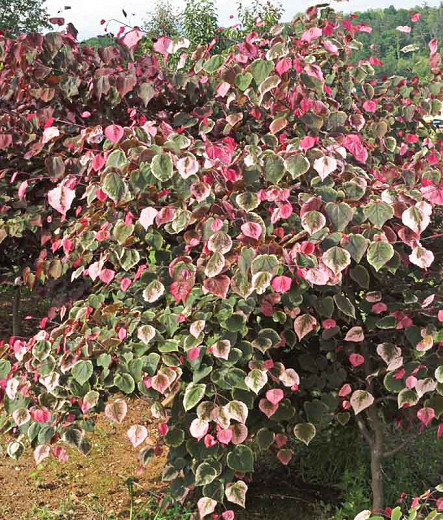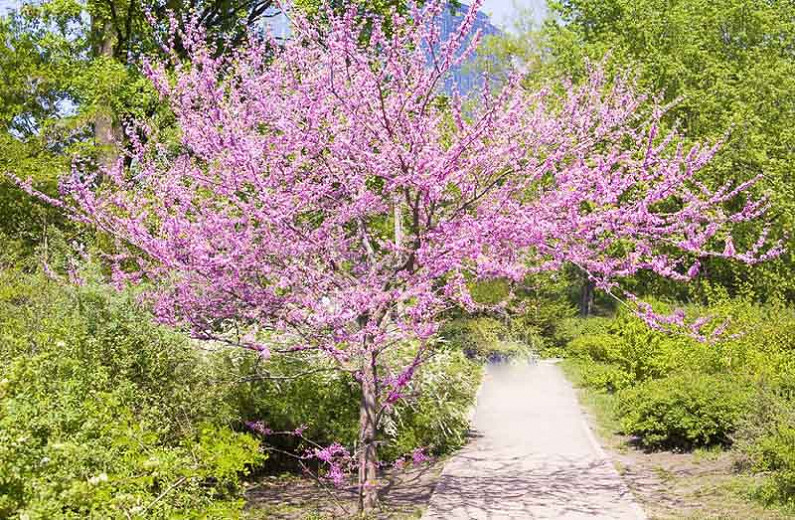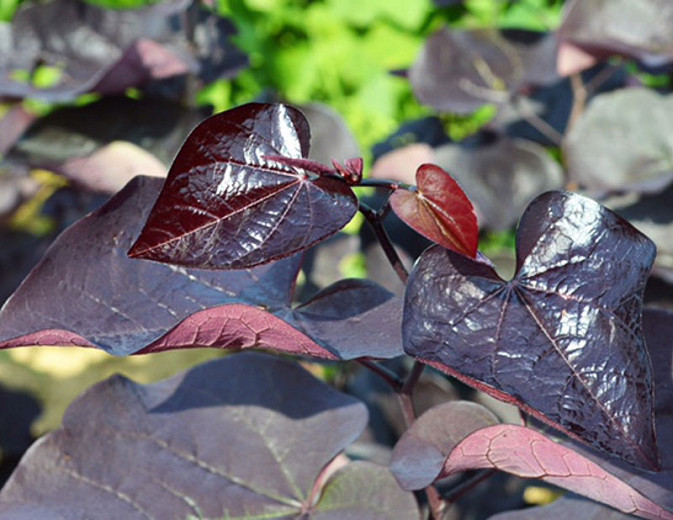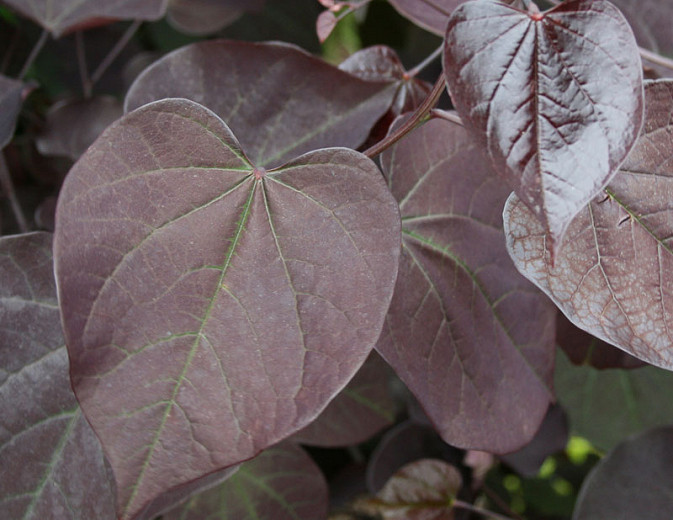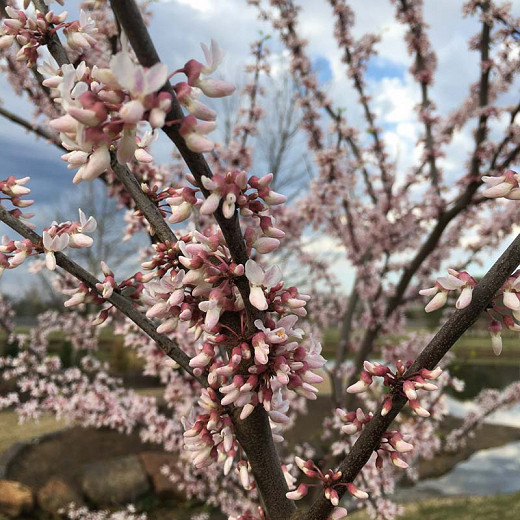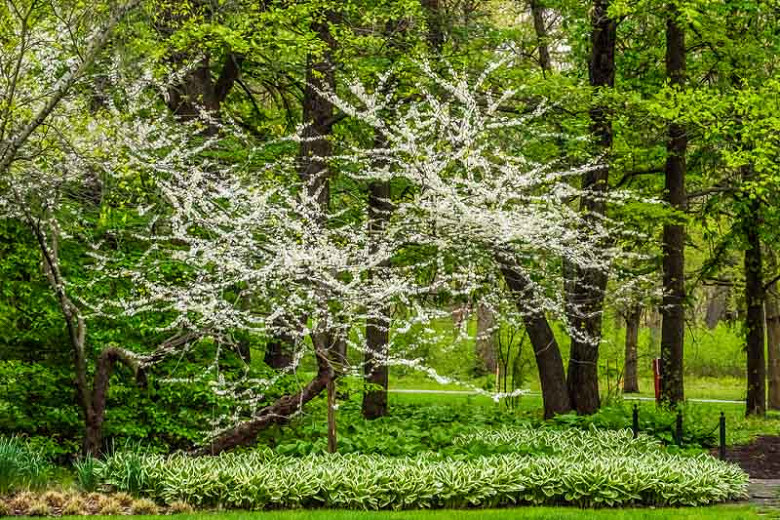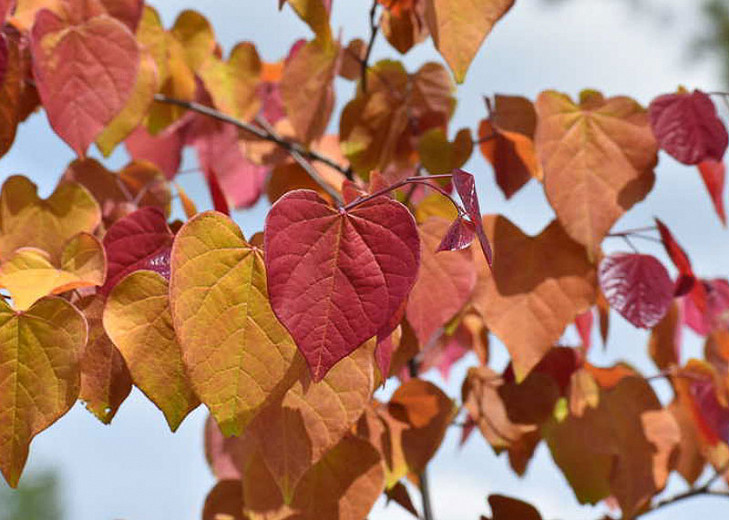Cercis canadensis Carolina Sweetheart® (Eastern Redbud)
Prized for its variegated foliage, Cercis canadensis Carolina Sweetheart® (Eastern Redbud) is a deciduous, often multi-trunked tree adorned with a rounded crown. A profusion of pea-like pink flowers held in clusters cover the bare branches in the spring, before the foliage emerges, creating a most dramatic display. The foliage of elegant, heart-shaped leaves emerges a rich purple in spring and gradually turns various shades of white, green, and hot pink, eventually, turning green in the summer.
Prized for its variegated foliage, Cercis canadensis Carolina Sweetheart® (Eastern Redbud) is a deciduous, often multi-trunked tree adorned with a rounded crown. A profusion of pea-like pink flowers held in clusters cover the bare branches in the spring, before the foliage emerges, creating a most dramatic display. The foliage of elegant, heart-shaped leaves emerges a rich purple in spring and gradually turns various shades of white, green, and hot pink, eventually, turning green in the summer. As the leaves drop, they reveal the pleasing silhouette of this eastern redbud. A great specimen or small flowering tree for the garden or woodlands. Developed through the combined efforts of NCNLA and NC State University.
- Grows up to 20-30 ft. tall (600-900 cm) and 30 ft. wide (900 cm).
- A full sun to part shade lover, this Redbud is easily grown in well-drained soils. Performs best in moderately fertile soils with regular and consistent moisture. Best flower production is obtained in full sun, but part shade is best in hot summer climates. Needs a winter chill before the flowers set properly.
- Perfect choice as a specimen plant or for shrub borders.
- Attracts birds, butterflies, and bees.
- Generally pest free. Watch for canker, verticillium wilt, dieback, leaf spots, mildew, and blights. Deer resistant.
- Does not transplant well. It should be planted when young and left undisturbed.
- Needs very little pruning. Remove diseased, damaged congested, or crossing shoots.
- Propagate by semi-hardwood cuttings.
- Cercis canadensis species is native to eastern and central North America from Connecticut to New York to southern Ontario and the Great Lakes south to western Texas and Florida.
Requirements
| Hardiness | 5 – 9 |
|---|---|
| Heat Zones | 2 – 9 |
| Climate Zones | 1, 1A, 1B, 2, 2A, 2B, 3, 3A, 3B, 4, 5, 6, 7, 8, 9, 10, 11, 12, 13, 14, 15, 16, 17, 18, 19, 20, 21, 22, 23, 24 |
| Plant Type | Trees |
| Plant Family | Cercis – Redbuds |
| Exposure | Full Sun, Partial Sun |
| Season of Interest | Spring (Early,Mid,Late)Summer (Early,Mid,Late)Fall |
| Height | 20' – 30' (6m – 9m) |
| Spread | 25' – 30' (7.5m – 9m) |
| Water Needs | Average |
| Maintenance | Low |
| Soil Type | Chalk, Clay, Loam, Sand |
| Soil pH | Acid, Alkaline, Neutral |
| Soil Drainage | Well-Drained |
| Characteristics | Showy |
| Tolerance | Clay Soil, Deer |
| Attracts | Bees, Butterflies, Hummingbirds |
| Garden Uses | Beds and Borders |
| Garden Styles | City and Courtyard, Informal and Cottage, Traditional Garden |
